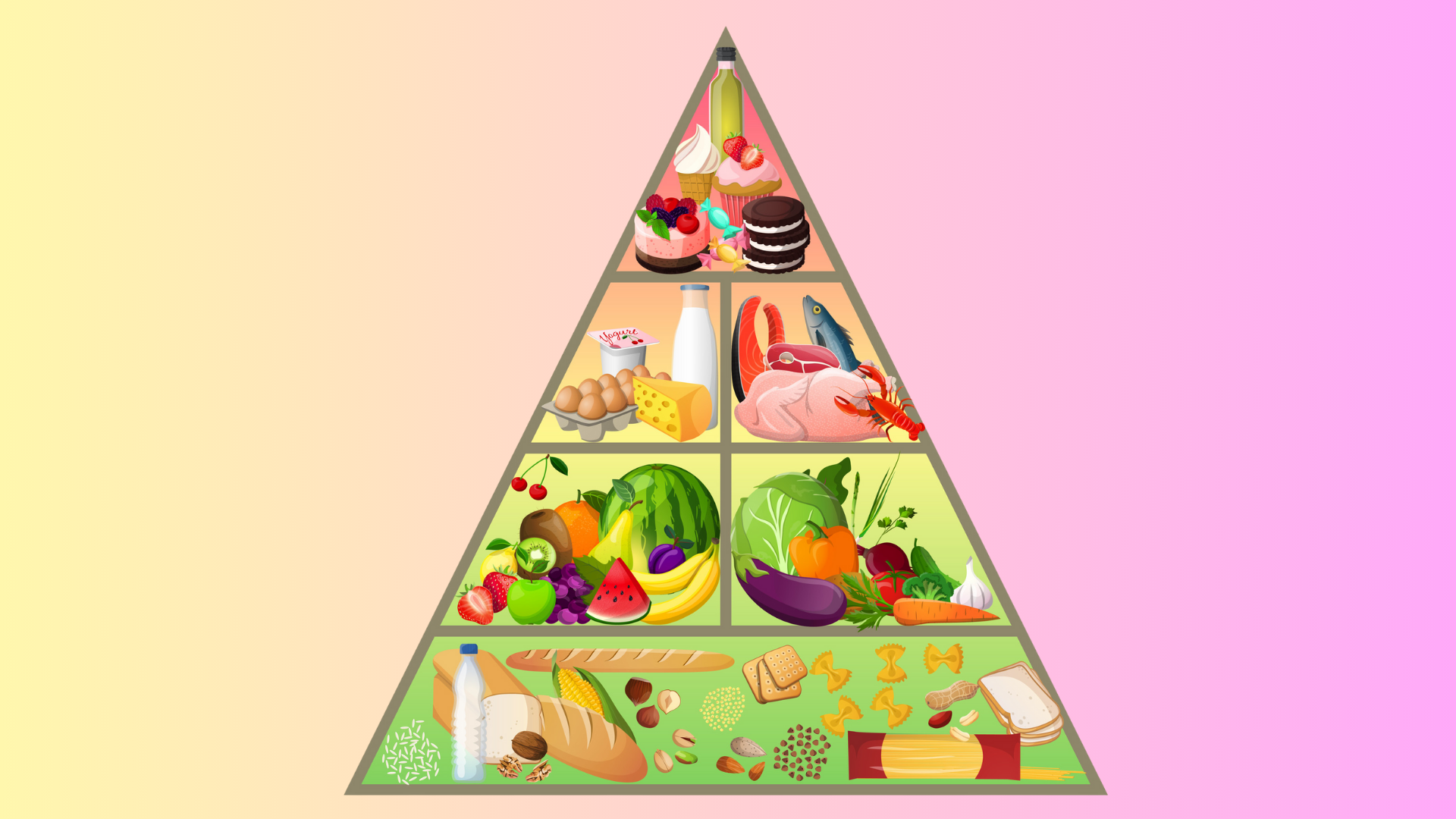
The food pyramid, introduced in the early 1990s by the USDA, was designed to provide a visual guide for a balanced diet. Over time, it has been subject to criticism and revision. Here’s a look at some common myths and facts about the food pyramid:
Table of Contents
Myths About the Food Pyramid
1. The Food Pyramid is Perfect for Everyone:
- Myth: People believe the food pyramid provides a one-size-fits-all solution for healthy eating.
- Fact: Nutritional needs vary based on age, sex, activity level, and health conditions. The pyramid’s guidelines might not suit everyone, especially those with specific dietary needs or restrictions.
2. All Carbohydrates are Equal:
- Myth: The pyramid encourages high intake of all carbohydrates, without making distinctions.
- Fact: The pyramid emphasizes grains, but modern nutrition advises choosing whole grains over refined ones. Not all carbohydrates are equal; whole grains offer more nutrients and fiber than refined grains.
3. The Pyramid Promotes Excessive Meat and Dairy Consumption:
- Myth: People think the pyramid suggests eating large amounts of meat and dairy.
- Fact: The pyramid recommends these foods in moderation, but some interpretations led to higher consumption than necessary. Recent guidelines now focus more on plant-based proteins and less on dairy.
4. The Pyramid is Outdated and Not Useful:
- Myth: People believe the food pyramid is completely obsolete and should be discarded.
- Fact: Although the pyramid has faced criticism, it influenced the development of newer dietary guidelines like MyPlate. Many principles from the pyramid remain relevant, but updated recommendations now offer more nuanced guidance.
Facts About the Food Pyramid
1. Emphasis on Balance:
- Fact: The food pyramid aimed to promote a balanced diet, focusing on grains, vegetables, and fruits at the base, with moderate amounts of protein and dairy higher up.
2. Guidance for Portion Control:
- Fact: The pyramid provided guidelines for portion sizes and the frequency of food groups, helping individuals manage their intake and achieve balance.
3. Introduction of MyPlate:
- Fact: The USDA introduced MyPlate in 2011 to replace the food pyramid. MyPlate presents a clearer visual of a balanced plate, with sections for fruits, vegetables, grains, protein, and dairy, reflecting updated nutritional science.
4. Shift Towards Plant-Based Foods:
- Fact: Modern dietary guidelines emphasize plant-based foods, including more fruits, vegetables, legumes, nuts, and whole grains, and suggest reducing red and processed meats.
5. Focus on Nutrient Density:
- Fact: Current guidelines highlight the importance of nutrient-dense foods, meaning those that provide vitamins, minerals, and other nutrients with fewer calories, aligning with a more sophisticated understanding of nutrition.
In summary, while the food pyramid was an important tool for its time, it has been refined and updated to better reflect current nutritional science. The key to a healthy diet remains balance, variety, and moderation, incorporating more plant-based foods and paying attention to individual dietary needs.


